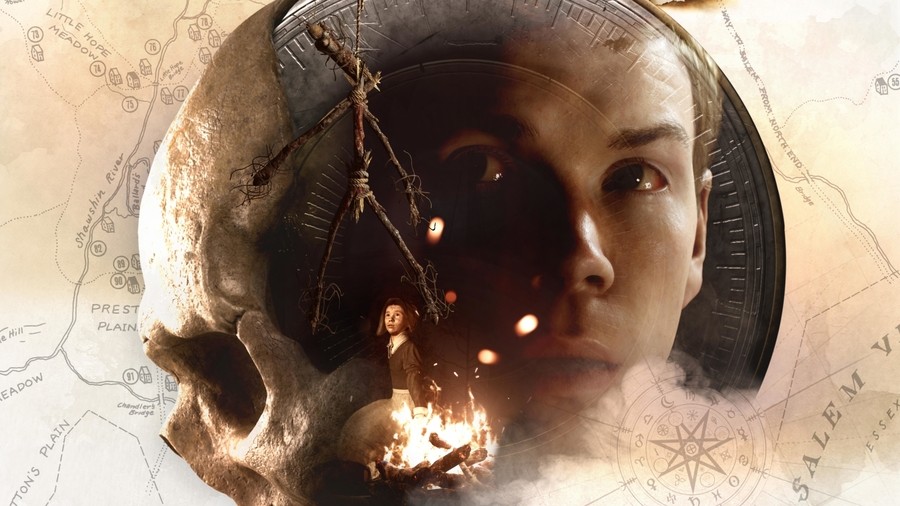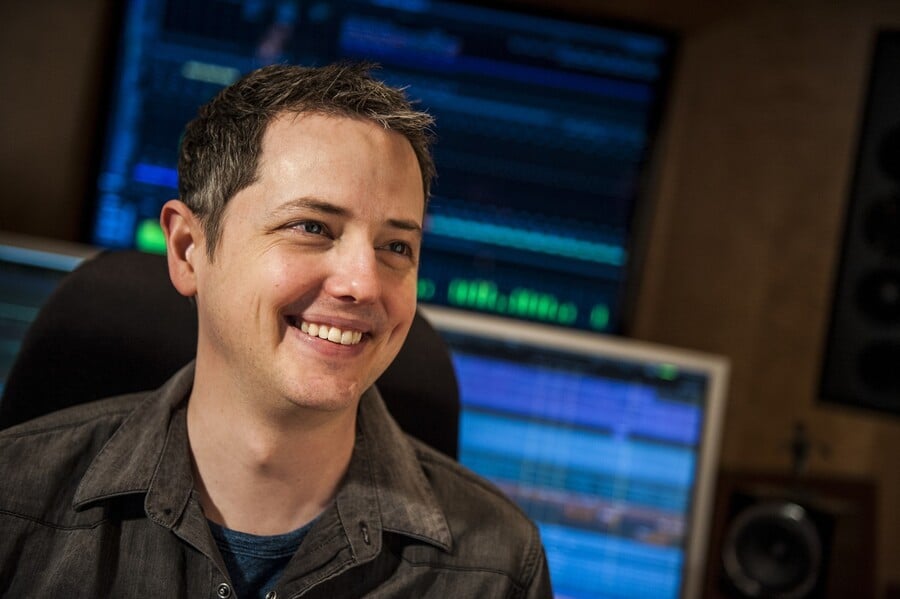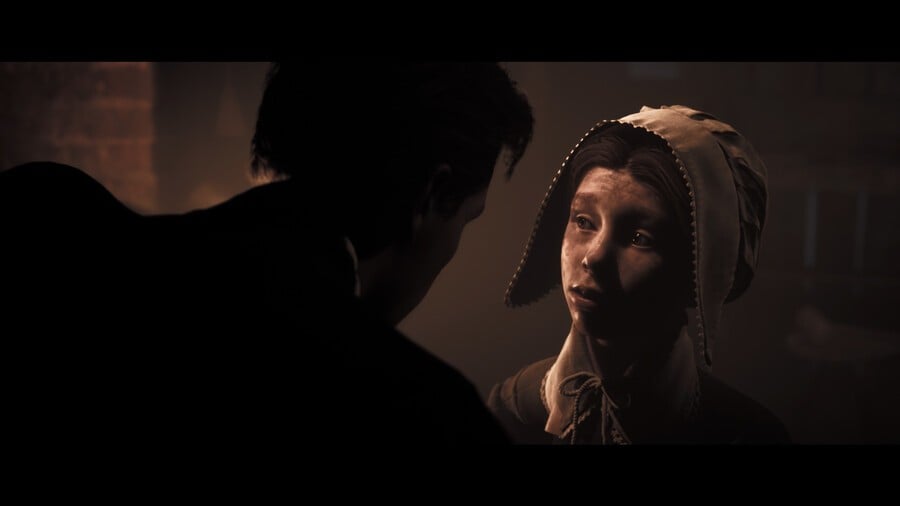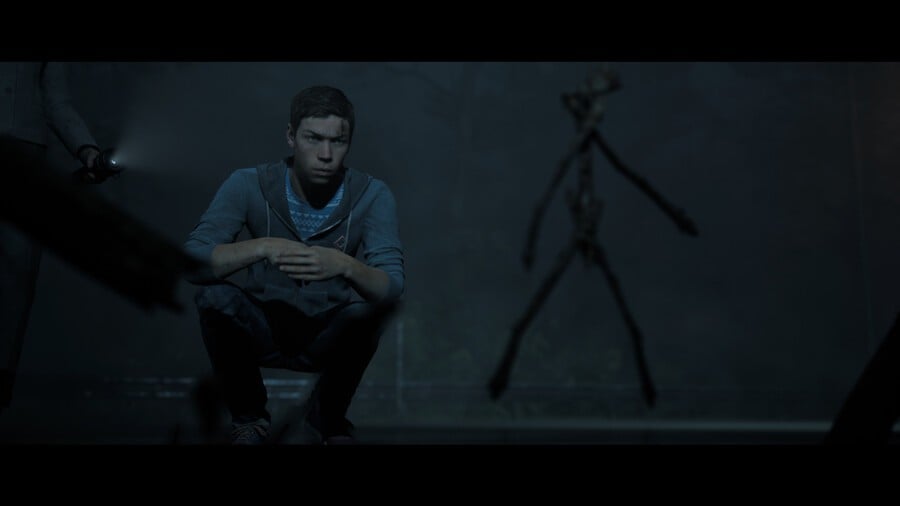
We recently had the chance to again have a chat with composer Jason Graves, this time regarding his work scoring the latest entry in the Dark Pictures Anthology series, titled Little Hope. While certainly a departure from our topic of discussion with Jason last time — the adorable PlayStation VR title Moss — Little Hope is a return to more familiar territory. Horror is likely the avenue you would best know Graves' work from. This is perhaps most notable with the Dead Space titles, as well as Supermassive Games' other wildly successful branching-narrative experience, Until Dawn. Join us as we discuss the differences in scoring different entries within the same anthology, how to capture an "antique" feel with music, and why in this particular instance, being out of tune was exactly the right call. Let's dive in.
Push Square: What approaches with Little Hope would you say differ from what you did for Man of Medan? Anything that stands way out?
Jason Graves: I like to think of each new game as a “clean slate,” musically speaking. Of course, if I’m working on a series (or Anthology, as in the case of The Dark Pictures) there are other things to consider as well. But my general approach is to be as musically specific and unique as possible for every title. It keeps me creatively satisfied and hopefully makes for some interesting choices and sounds.
Man of Medan takes place during current times and on the ocean. Those two aspects of the game already left some fairly solidified ideas in my head about the score. Present-day translated to a hybrid score with both orchestra and synths, more or less equally balanced. Being on the ocean automatically translated to triplet rhythms or time signatures. For some reason that 1-2-3 lull is always associated with the ocean to me. So the whole score is in 3, essentially.

In what ways are you hoping (or maybe already started?) building themes across the anthology? Supermassive has long-term plans for the series, and you’ve already scored the first two. How do you hope to keep building out melodies, leitmotifs, etc?
I didn’t want anything too heavy-handed, given that each outing of the Anthology is completely different. But Barney Pratt, the Audio Director at Supermassive Games, and I did approach things with a bit of a long-term overview of all the games, musically speaking. It’s definitely more of a subtle “fun with music” kind of thing on my part, as opposed to something more overt and obvious to the casual player.
There’s a chord progression that is shared between the two titles. It’s the most obvious in the main themes for both. Plus the general notes of the themes in both titles share a lot of common musical DNA, but they remain respectful of their specific historical settings. Man of Medan is very flowing and “swishy” - like a sea shanty on the open ocean. I intentionally took those notes and tweaked them to have a much more sing-song, nursery rhyme kind of feel for the Little Hope main theme. It spoke to the time period a lot of the game takes place in.
It also highlights one of the main characters in the game - a young girl from Puritan times. There are some most excellently spooky scenes in the game where she plays with her doll and sings to herself. Those were some of the first things I saw from Little Hope and a lot of what I ended up doing for the score was based on those initial playthroughs.
Through the years, how would you say your approach to horror has changed? Are there any instruments, approaches, or even ideas you would never have in a million years been interested in or thought to use back when you were scoring say, Dead Space? I’m particularly curious about this in relation to your non-horror scores. Stuff like Moss!
I think any artist has an innate desire to learn, grow, and evolve their craft. Fortunately for me, it’s easy to have a different approach to each game because each game is so different! So, technically speaking, my approach to horror changes with every new score. The instrument choices are especially relevant and normally the first thing I begin thinking about in terms of tone and mood.
For something like Moss, it was all about the forest setting and simply adorable little mice living in their adorably tiny village. My brain instantly said, “Think small!” and I gathered every smallish instrument I had - ukulele, Celtic harp, dulcimer, whistle, shakers, and hand drums. Simply using those specific instruments in a track defined about 75% of the score’s sound instantly.

In what ways does the work on your Dark Pictures scores differ from the process behind Until Dawn? Since all of the titles are from Supermassive, and mechanically they share DNA, how did that change your job? The mechanical approach Supermassive takes with its titles definitely requires the score (and performances and writing of course) to do some heavy lifting they might not otherwise be called upon to do.
Until Dawn was definitely a larger scale project, both in terms of overall game scope and music. I think it was something like 12-15 hours of gameplay compared to The Dark Pictures Anthology’s estimated four-hour length for each of its titles. But these new titles are much ‘deeper’ in the sense that they have very high replay value. You can play over and over again, making different choices, and have a different ending.
Most games have 2-3 minutes of music that either repeats or remixes itself, which is how Until Dawn’s score was constructed. But more recently I’ve been experimenting with much longer pieces, say 7-8 minutes, to avoid things looping as much and add some variety into the tracks. It also provides more musical coverage for the many branching options in the new Anthology.
I started doing this with Moss, which consists of musical suites between 5-8 minutes long. In fact, the entire OST to Moss is simply the suites I made for the game - each suite has its own track on the final recording.
And to build off the performance angle, what influence did the characters for Little Hope have on your score? Did you want to structure the score around character themes? Or was the goal to more broadly match the music to the setting? What would you have done that worked for Medan, that wouldn’t really fit Little Hope as well? Or more generally, what kinds of sounds did you hone in on this time, that you didn’t last time?
This time around it made sense for the music to reflect more of the setting than specific characters. As a fun historical angle, I took extra care to keep everything as out of tune as I could. I thought the whole “imperfect” sound of these rather simple instruments really conveyed that antique sound I was trying to achieve. It actually became a bit of a game for me as I realized my favorite performances were almost always the first take I recorded. So I ended up composing and recording every cue with only first takes on each instrument. Plus no editing or tweaking in the computer afterward!
I ended up really liking the music that was born out of that method - it sounded very raw and outdated. And I quickly realized that any other tweaking I did to “clean up” the sounds in the computer, something that all studios do for live recordings of any instrument, really only made my tracks more sterile. It was like I was wiping away all the character.

The score really came together once I established that completely raw, first-take-only mentality, without any editing or tweaking afterward. I basically used the computer as a fancy tape machine.
Little Hope takes place in a few different time periods, mostly focusing on the late 1700s. I thought it would be interesting if the music had that sort of period, “antique” sound to it. That would give the score its own unique flavor as well as putting players into an old-world kind of atmosphere. Instead of the synths or orchestra sounds I used in Man of Medan, I started with simple, stringed instruments like bowed psaltery, hurdy-gurdy, hammered dulcimer, and solo cello.
These were all instruments I had in the studio, so I had complete control over what I played on them and how they were tuned. I made sure that everything I played was a little sloppy and “homemade” sounding, almost like random folks were trying to play them after finding them on the side of the road in the 1700’s. Now THAT’S something I wish would have happened in the game!
And there we have it! We would of course like to thank Jason again for taking the time to do this with us. And If you're itching to hear all the tunes from the game, it's available to stream Spotify and various other platforms, and even saw a vinyl release through the official Bandai Namco Store.





Comments 9
@Lightning13 - Personally I thought Little Hope was better than Man of Medan, but not by a lot, it's certainly no where near as good as Until Dawn, but it was no where near as bad as Man of Medan. Little Hope was still a decent game, but it makes one mistake (Story-wise) that Man of Medan made, whether that mistake is better or worse than Man of Medan's mistake, I guess that comes down to personal preference.
@Lightning13 I preferred the setting of Man of Medan (ghost ship) but I can’t say which is better overall because I haven’t got very far with Little Hope. I need to get back to it really because I did enjoy what little I played, it just didn’t grip me like Man of Medan did.
I played Man of Medan shortly after Until Dawn, big mistake😂
@Jacko11 Oof, night and day!
I really wish these games were better so far but they are dog****. Using that same garbage twist Man of Medan uses but even worse this time. Doesn't seem they are getting anywhere near the level of Until Dawn.
This is the most pathetic, disappointing, and unworthy excuse of journalism ever! A whole interview and you didn’t ask the single most important question that fans of the series want to know!
WHAT DOES THE KEY MEAN!?
Excellent interview, thanks! Interesting “first take/out of tune” approach that I imagine adds to the unsettling horror element as well. Haven’t played these yet but when I do I’ll definitely keep a keen ear on this instalment’s score.
Thanks for the interview. I really enjoy these games. Until Dawn is in a league of its own and while its disappointing that Man of Medan and Little Hope did not come close to reaching the highs of Until Dawn, they are still fun. If you catch it on a sale it is worth the price of admission.
@DrJames Of course! Yeah Until Dawn just set such a high bar to clear, and the smaller bite-sized experiences this Anthology is aiming for just aren't in the same league, Still neat in their own right though!
@starlokk your comment directly next to @Jimmer-jammer 🤣
"pathetic, disappointing" vs "excellent interview, thanks!" Bahahaha
Tap here to load 9 comments
Leave A Comment
Hold on there, you need to login to post a comment...